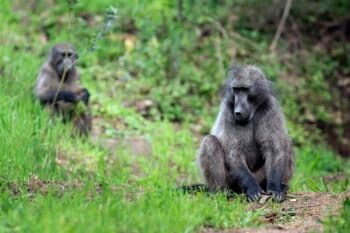
In late August, high in South Africa’s Jonkershoek Mountains, a small group of botanists picked their way across steep ground in search of one of the world’s rarest plants. They were surveying Penaea formosa, a critically endangered shrub thought to number fewer than 50 individuals. Donovan Kirkwood, curator of the Stellenbosch University Botanical Garden, was with them. He slipped, fell, and did not return. He was 51.
His death on August 26th was as stark as it was telling. Fieldwork, he observed, was not all “exciting trips into pristine wilderness” but often involved long treks to degraded remnants, fences and roadside verges, where fragments of rare flora cling to survival. Such places, he believed, deserved just as much attention as the postcard landscapes. In his years at Stellenbosch, he turned a tiny garden of 1.7 hectares into a force in plant conservation, advancing methods to propagate species on the very brink of disappearance.
The Cape Floristic Region, where he worked, is a global hotspot, rich in species found nowhere else but heavily damaged by farming and urban sprawl. Of the 10,000-odd plants in the Western Cape, nearly 40% are considered at risk. He set out to shift the odds. His most noted success came with Marasmodes undulata, a shrub once down to three surviving plants in the wild. From 90 banked seeds, he coaxed eight into life, eventually producing hundreds of offspring, many replanted in the field. The effort was painstaking and fragile, yet for him emblematic of what persistence could yield.
Conservation for him was not confined to science. He helped establish the James and Shirley Sherwood Botanical Art Collection, pairing art with botany to spark public engagement. He saw the garden as not only a scientific hub but also a place where people might, in his words, “fall hopelessly in love with plants and nature.”
Before arriving at Stellenbosch in 2018, he spent years at CapeNature, the provincial conservation agency, shaping reserve management plans and strategies for protected-area expansion. His PhD in ecology, completed at the University of Cape Town, trained him in population dynamics and floristic survey. But his temperament—energetic, curious, and willing to combine meticulous field data with imaginative outreach—was as decisive as his credentials.
Colleagues remember him as “enigmatic, enthusiastic, colorful, kind.” Under his stewardship, the botanical garden earned recognition from Botanic Gardens Conservation International as one of a handful worldwide accredited for threatened-species conservation. He also experimented with “satellite” conservation plots outside traditional gardens, including one in a corporate office building in Cape Town. The idea, radical to some, was to expand capacity by any means necessary.
In the end, he was working much as he always had: in the field, after a plant many had forgotten. That, he believed, was where the future of South Africa’s flora would be secured—one species, one patch of ground, at a time.
Header image: Donovan Kirkwoord. Image courtesy of Stellenbosch University Botanical Garden.





